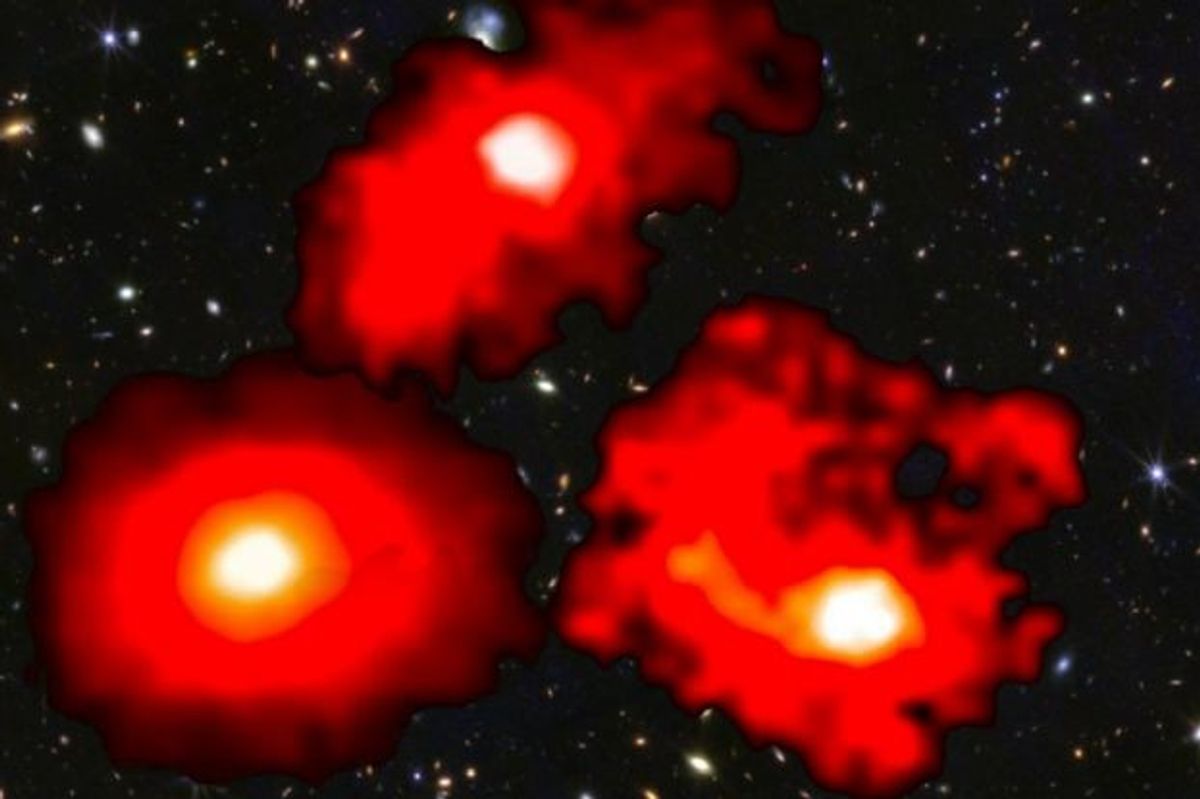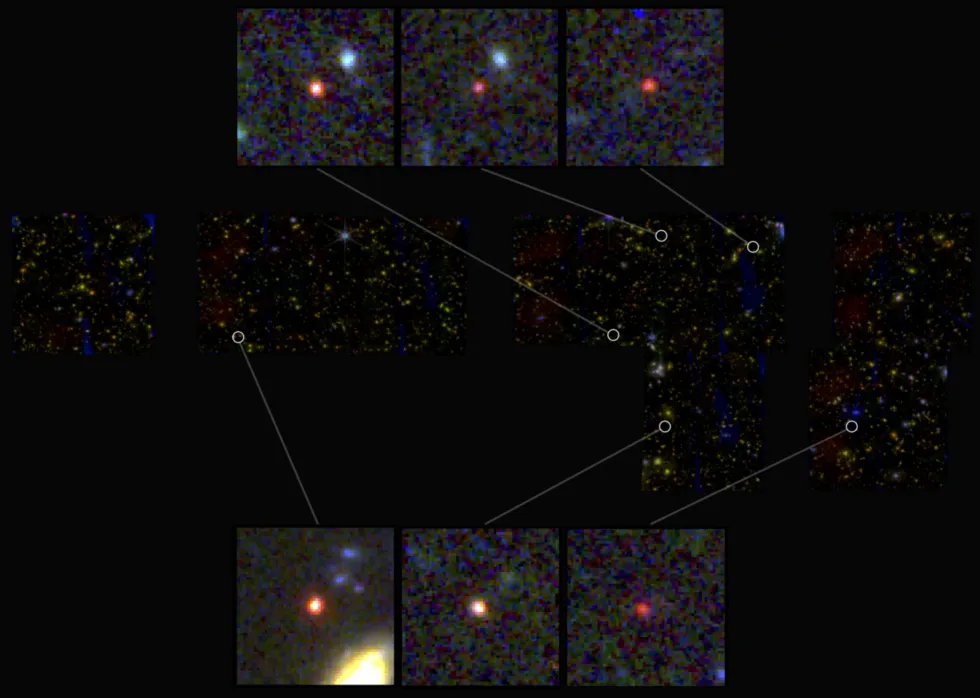News Desk
The News Desk provides timely and factual coverage of national and international events, with an emphasis on accuracy and clarity.

A composite image showing JWST's observations of the three 'Red Monster' galaxies in the Cosmic Dawn.
NASA
'Red Monsters' defy prevailing Lambda Cold Dark Matter (LCDM) cosmological model
Galaxies likely formed stars at a much faster pace than previously believed
Red Monsters suggest rapid and efficient star formation process in early universe
NASA's James Webb Space Telescope (JWST) has captured images of three massive galaxies dating back 12.8 billion years, sparking a significant rethink of galaxy formation theories.
Dubbed 'Red Monsters', these ancient galaxies are roughly the size of the Milky Way but appear nearly a billion years older than the Big Bang. The discovery challenges astronomers' fundamental understanding of the universe and existing cosmological models.
The findings were published in Nature on Nov. 13, as part of the First Reionization Epoch Spectroscopically Complete Observations (FRESCO) survey. The study aimed to systematically examine a sample of emission-line galaxies (ELGs) from the universe's first billion years.
The ELGs are identified by distinct bright lines in their spectral emissions, which researchers use to determine the galaxies' distances and star content.
The prevailing Lambda Cold Dark Matter (LCDM) cosmological model posits that galaxies from this era should be far less massive due to limited time for growth.
'Tantalizing puzzle'
These newly discovered Red Monsters defy that theory, with astronomers suggesting that star formation in the early universe may have been far more efficient than previously thought.
"Finding three such massive beasts among the sample poses a tantalizing puzzle," said Stijn Wuyts, co-author of the study and the Hiroko Sherwin Chair in Extragalactic Astronomy at the University of Bath.
"Many processes in galaxy evolution have a tendency to introduce a rate-limiting step in how efficiently gas can convert into stars, yet somehow these Red Monsters appear to have swiftly evaded most of these hurdles."
The study revealed that while most galaxies in the survey conformed to expected models, the Red Monsters stood out due to their extraordinary mass. According to Wuyts, these galaxies likely formed stars nearly twice as fast as galaxies that emerged later in cosmic history.
Faster star formation
This discovery builds on earlier findings by JWST. A February 2023 study identified six galaxies that formed 500 million to 700 million years after the Big Bang, each 100 times more massive than anticipated. These studies indicate that star formation in the early universe may have occurred at a much faster pace than previously believed.
Astronomers widely accept that galaxies form within halos of dark matter, where gravity captures gas and condenses it into stars. Typically, only about 20% of this gas becomes stars, making galaxy growth a gradual process. The Red Monsters challenge this paradigm, suggesting an unusually rapid and efficient star formation process.

While some scientists speculate that these anomalies may be optical illusions caused by black holes within the galaxies, others argue they require a fundamental reassessment of cosmological models.
For example, a study published in August 2023 suggested that black holes might make early galaxies appear brighter and larger than they actually are.
"Already in its first few years, JWST has thrown us a couple of curveballs," Wuyts said.
Solving this cosmic mystery will need deeper exploration of these unusual galaxies using JWST's advanced capabilities.










Comments
See what people are discussing